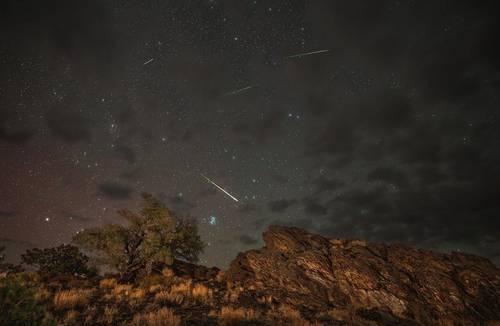Anthropologists examine the social effects of glacier loss

Anthropologists examine the social effects of glacier loss
273 billion tons of ice are lost worldwide every year.
▲ Chunks of ice break off the Perito Moreno Glacier on Lake Argentina in Los Glaciares National Park, near El Calafate, Patagonia, Argentina, 2016. Photo AP
Europa Press
La Jornada Newspaper, Friday, June 20, 2025, p. 6
Madrid. Rice University anthropologists, in an original contribution, examine the social consequences of the global loss of glaciers in an article published in Science .
The article appears alongside new research estimating that more than three-quarters of the world's glacial mass could disappear by the end of the century under current climate policies. While the study projects the physical consequences of glacial melting, Cymene Howe and Dominic Boyer highlight the social impacts and human histories behind the statistics, from altered ecosystems and endangered cultural heritage to the funerary rites
celebrated for the lost ice.
Statistics about glacier loss can often seem abstract and distant. But glaciers have literally shaped the ground beneath our feet and provide crucial water resources to 2 billion people. For those who have lived near glaciers, their cultural meanings often run deep, representing the fundamental relationship between the social and natural worlds
, said Howe, a professor of anthropology and co-director of the Science and Technology Studies Program at Rice University.
Global list of victims
The commentary builds on the authors' ongoing work on the Global Glacier Victims List, a Rice digital platform documenting glaciers that have melted or are critically endangered. The project combines climate science, social science, and community narratives to commemorate a rapidly disappearing part of Earth's cryosphere.
The past five years have been the worst for glaciers since ice loss has been scientifically recorded. We are currently losing 273 billion tons of ice globally each year, but there is a sense that even these staggering losses are not enough to motivate the necessary climate action
, Boyer, professor of anthropology and co-director of the Center for Coastal Futures and Adaptive Resilience, said in a statement. This is where we believe the social sciences can collaborate with glaciologists and climate scientists to explain the significance of these losses and how many lives and communities are affected when these amazing landscapes disappear
.
The publication marks a rare appearance by social scientists in Science , which focuses primarily on research in the natural and physical sciences. The authors argue that addressing the impacts of climate change requires not only scientific measurement, but also cultural understanding, public memory, and collective action.
As glacier loss accelerates, so do social and emotional responses to environmental change
, they write.
The United Nations has designated 2025 as the International Year for Glacier Preservation. Howe and Boyer emphasize that global climate goals, such as limiting warming to 1.5 degrees Celsius above pre-industrial levels, could still preserve a significant portion of the world's glaciers and prevent the erosion of ecosystems, economies, and cultural ways of life linked to them.
Most people on Earth will never have the opportunity to be in the presence of a glacier, but its loss affects us all. We still have a chance to preserve half of the world's remaining glaciers if we act together, and immediately,
Howe said. We've lost so much, but there's still so much to save for ourselves and for future generations—they deserve to know the magnificence and meaning of these great masses of ice
, he concluded.
The Perseid meteor shower is approaching.

▲ Perseid meteor shower in a partly cloudy sky over Inyo National Forest in Bishop, California, in 2024. NASA photo
Latin Press
La Jornada Newspaper, Friday, June 20, 2025, p. 6
Washington. The Perseid meteor shower is a spectacle eagerly awaited by thousands of people. It will run from July 17 to August 24, reaching its peak on August 12.
They will be visible anywhere in the sky, with the naked eye, in the Northern Hemisphere, but experts warn that in 2025 the Moon will be very bright at that stage, which may limit viewing conditions.
They point out that the glare of this star can significantly reduce the visibility of weaker meteors.
At their peak, the Perseids produce around 100 meteors per hour and are considered one of the most prolific shooting star streams, according to the astronomy website StarWalk.
Its trajectory extends through the constellation Perseus, hence its name. Within this constellation is a point, called the radiant, from which the meteors appear to emanate. The higher the radiant rises, the more stars will be visible.
The best years for observing this shooting star phenomenon also coincide with new moons or lunar phases that do not interfere with the second half of the night.
The primary body for the Perseids is the large periodic comet 109P/Swift-Tuttle, which, although it approaches Earth only once every 133 years, is possible to observe this meteor shower because the planet we live on crosses the comet's trail annually.
They are also popularly known as the Tears of Saint Lawrence, as they take place close to the date of the saint's day, August 10.
jornada





